Oxford PV layers perovskite over silicon to capture a wider wavelength range
Chris Case, chief technology officer at Oxford PV, firmly believes that solar needs to be 50% of the global energy mix by 2050 if we are going to have a chance to save this planet. ‘There is no real logical reason to expand energy infrastructure other than solar,’ says Case. ‘There is no better energy source.’
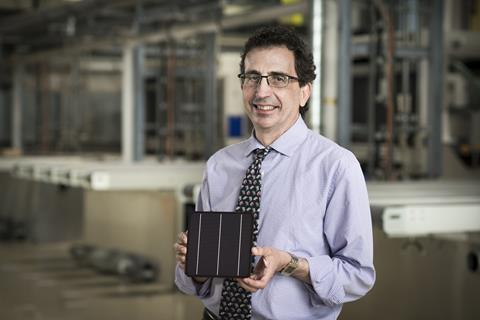
A look at the energy sector shows he is not alone in this belief. Solar is the fastest-growing energy source in the EU – during the summer of 2021, solar panels generated a record 10% of EU electricity. This is, however, far from 50%.
The biggest hurdle to solar taking a bigger share of the market lies in improving the efficiency of panels (the proportion of incident solar energy that can be converted to electricity). The fundamental cap on efficiency for single-junction cells – the Shockley–Queisser limit – is around 30% for silicon-based cells. While some researchers and entrepreneurs have been looking for ways around the problem, others have turned to multiple junctions.
This is the approach Oxford PV, a spin-out from the University of Oxford, UK, has taken. Its tandem cells have a coating of a perovskite material on top of silicon. Perovskites can be tuned to absorb more short-wavelength, blue-green light, leaving the silicon to absorb the longer-wavelength, redder light.
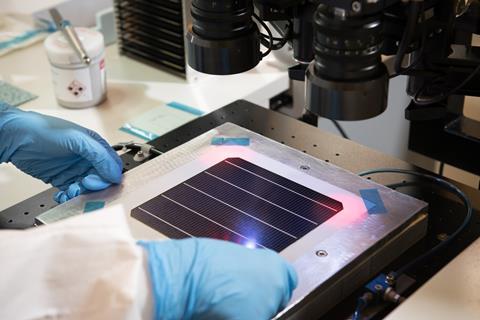
The company has been able to set new records for solar cell efficiency. In 2020, Oxford PV showed its cells can convert 29.52% of solar energy into electricity. Commercial silicon panels hover at 15–20%, with a maximum conversion rate around 26%.
At these efficiency levels, perovskite-based tandem cells open the door to a rapid transition to solar, Case believes. ‘As we raise the efficiency, the cost of the energy is reduced, which allows us to adopt something faster, which then reduces costs further,’ he says. ‘And the faster we accelerate the adoption of solar, the better chance we have to arrest climate change.’
Oxford PV was spun out of Oxford University in 2010 by physicist Henry Snaith and Kevin Arthur – a serial entrepreneur in high technology companies. Case was hired in 2014 to commercialise the product – initially intended for building-integrated photovoltaic applications, before the focus shifted to tandem solar cells.

Commercial production of the cells was due to begin in 2021 at Oxford PV’s industrial site in Germany – Europe’s biggest solar market. After a delay due to Covid-19 and related supply chain issues, it’s now geared up to start later this year. It will be the world’s first volume manufacturing line for perovskite-on-silicon tandem solar cells.
The 100 megawatt/year capacity factory will supply residential customers first, before branching out to commercial customers and, ultimately, the highly price-sensitive utility sector.
While silicon solar panels with efficiencies over 20% are available to homeowners at competitive prices already, and improvements in silicon cell technology are being made constantly, Case insists that it will be necessary to move beyond silicon if solar energy is to fulfil its potential.
Silicon is an indirect bandgap semiconductor, so some energy is always going to be lost in the transfer between photons and electrons. Silicon also needs to be meticulously purified, and extracting and processing it into high quality solar cells is a resource-intensive process. ‘It takes seven tonnes of silicon to make a million watts of solar cells but only 35kg of perovskite for the same result,’ says Case.
Oxford PV argues that the lower environmental footprint involved in producing perovskite cells somewhat offsets the materials’ unresolved problems. The most prominent of these is that they contain lead. Alternatives, such as tin, have been tried and tested but the performance of the cells degrades rapidly.
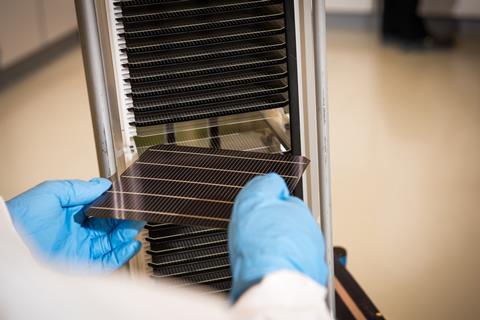
A life-cycle analysis of Oxford PV’s tandem cells suggests that the small amount of lead they contain wouldn’t have much impact on environmental toxicity if it escaped. There are strict occupational exposure limits for the levels of lead workers can be exposed to, but EU legislation allows for using lead in solar cells. ‘That doesn’t mean it’s not desirable to reduce or eliminate it in the long-term,’ says Case, and Oxford PV is trying to phase out the lead that is used to connect the wires and connectors in the solar panels.
Overall, Oxford PV claims producing cells with its perovskite materials is sustainable. The company published an analysis last year showing that there are sufficient raw materials available to make perovskite solar cells that would produce more than 30 terawatts of power at peak efficiency. That’s enough for all the solar capacity projected to be built between now and 2050.
The company plans to expand its current, 100 megawatt/year capacity factory to two gigawatts/year by 2024 and to build additional factories every two years after that. By the end of the decade, Oxford PV should have at least ten gigawatts/year of high efficiency solar cells in production, says Case. ‘Demand for a high efficiency solar product is huge and there is no commercially viable alternative to this product. You can make as much silicon as you want but you cannot make [solar cells] any more efficient without some multijunction approach.’
Oxford PV
Date of founding: 2010
Location: Oxford, UK
Origin: Spin-out from the University of Oxford
Employees: 130
Funding to date: £110 million
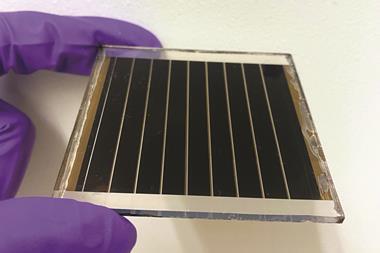
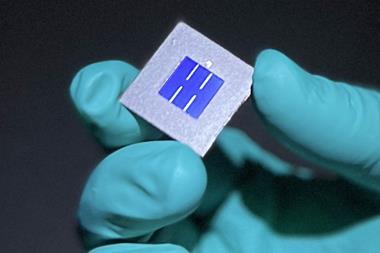

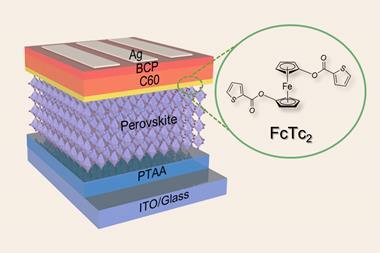








No comments yet